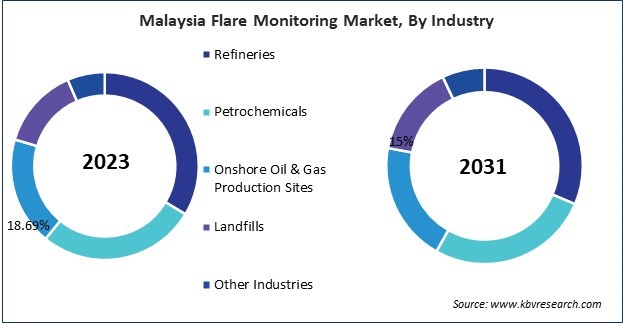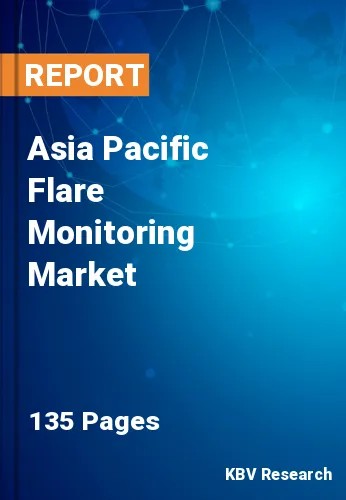The Asia Pacific Flare Monitoring Market would witness market growth of 9.1% CAGR during the forecast period (2024-2031).
The China market dominated the Asia Pacific Flare Monitoring Market by Country in 2023, and would continue to be a dominant market till 2031; thereby, achieving a market value of $152.7 million by 2031. The India market is registering a CAGR of 8.5% during (2024 - 2031). Additionally, The South Korea market would showcase a CAGR of 9.9% during (2024 - 2031).

Many governments increasingly recognize the importance of reducing industrial emissions and promoting sustainability. Financial incentives, including tax breaks, subsidies, grants, and other forms of support, are provided to companies as part of broader environmental and climate action strategies to encourage them to invest in environmentally beneficial technologies. These incentives help companies offset the high initial costs of implementing such systems, foster innovation, and drive compliance with regulatory standards.
Governments and environmental agencies are also crucial in promoting the adoption of these systems. Many countries have introduced financial incentives, grants, and subsidies to encourage industries to invest in monitoring technologies and reduce emissions. Environmental regulations are particularly stringent, companies that fail to comply with requirements may face substantial fines and penalties. These regulatory and financial pressures are expected to drive further adoption of these systems, particularly in industries where flaring is routine.
South Korea is witnessing a rising demand for these systems, particularly in its refinery sector, one of the largest in the Asia-Pacific region. As part of its 2050 Carbon Neutrality Roadmap and National Green Growth Strategy, the South Korean government has pledged to decrease greenhouse gas emissions. Emissions are regulated by the Ministry of Environment and the Korea Environment Corporation, which also require the monitoring of flare emissions from refineries. Major refiners like SK Energy and S-Oil are subject to these regulations, requiring them to implement advanced technologies. In addition, South Korea’s participation in the Emission Trading Scheme (ETS), which caps emissions and allows the trading of carbon credits, provides further motivation for companies to adopt these systems to avoid fines and maximize efficiency. Thus, as these governments continue to strengthen their environmental policies and promote sustainable practices, the market for flare monitoring systems in the Asia Pacific region is poised for sustained growth.
Free Valuable Insights: The Global Flare Monitoring Market is Predict to reach USD 2 Billion by 2031, at a CAGR of 8.5%
Based on Mounting Method, the market is segmented into In-process (Gas Chromatographs, Mass Spectrometers, Flowmeters, Calorimeters, and Other In-process Type) and Remote (Thermal (IR) Imagers, Multi-Spectrum Infrared (MSIR) Imagers, and Other Remote Type). Based on Industry, the market is segmented into Refineries, Petrochemicals, Onshore Oil & Gas Production Sites, Landfills, and Other Industries. Based on countries, the market is segmented into China, Japan, India, South Korea, Singapore, Malaysia, and Rest of Asia Pacific.
By Mounting Method
By Industry
By Country
Our team of dedicated experts can provide you with attractive expansion opportunities for your business.

